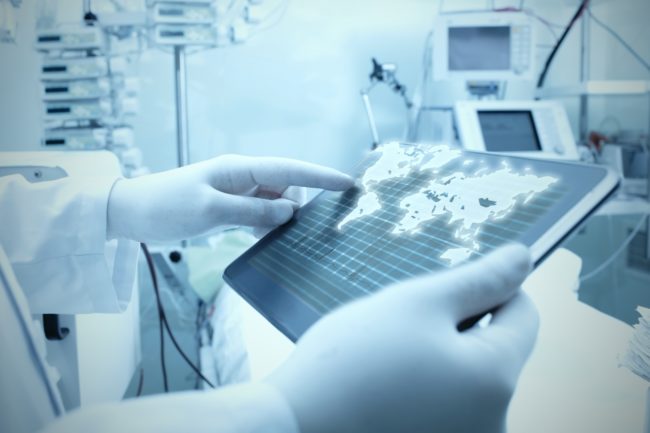By Frank Piller, General Manager Products at TÜV Rheinland Japan
 After basic regulations for pharmaceuticals and medical devices had remained unchanged for a long time in Japan, the country enacted the Pharmaceutical and Medical Device Act or PMD Act in November 2014.
After basic regulations for pharmaceuticals and medical devices had remained unchanged for a long time in Japan, the country enacted the Pharmaceutical and Medical Device Act or PMD Act in November 2014.
Officially called “The Act on Securing the Quality, Efficacy and Safety of Pharmaceuticals, Medical Devices, Regenerative and Cellular Therapy Products, Gene Therapy Products, and Cosmetics,” the new law by the Ministry of Health, Labour and Welfare (MHLW) followed a thorough review and marked a substantial revision of the old Pharmaceutical Affairs Law (PAL). In addition, it also incorporated important changes intended to achieve global harmonization.
What are the obstacles faced by manufacturers planning to enter the medical device industry?
The medical device industry is expected to lead the Japanese economy in the future. According to Nikkei Health and Nomura Research Institute, an increasing number of electronics-related businesses previously not active in medical devices are entering the medical industry one after another.
About 90 percent of the 20 leading manufacturers of home electronics appliances in Japan have already diversified into the medical device field or have a plan for the development of medical devices. Similarly, the results of a survey of 99 leading chemical product manufacturers in Japan showed that over 70 percent of these have already advanced into the medical device field or plan to develop medical devices in the future.
However, the PMD Act acts as a market barrier that makes it difficult for manufacturers from different industries to enter the medical device field. Of particular note, when revising the PAL in 2013 to create the PMD Act, the government shifted the focus of regulations to design control (the “design and development process”), to allow the PMD Act to keep pace with its counterparts in the U.S. and Europe.
Manufacturers attempting to diversify from other industries into the medical device field are required to establish the design and development processes specified in ISO 13485, which is a QMS standard for medical devices, and maintain records that demonstrate the implementation of their design and development processes. Since it takes a considerable amount of time to establish design control, a business attempting to develop a medical device must begin conducting study and research at an early stage. In addition, if the medical device involves the use of software, it is also necessary for the manufacturer to meet other regulatory requirements with its design and development process of ISO 13485.
Five important differences between the PAL and the PMD Act
To better understand how the PAL was revised in the writing of the PMD Act, the following lists the five most important points of difference.
1. Application of design control
All medical devices that require approval or certification are subject to requirements concerning design control stated in the Revised QMS Ministerial Ordinance. This QMS Ministerial Ordinance consists of the ISO 13485 requirements and Japan’s additional requirements. Medical device regulations in Europe and the U.S. also apply the concept of design control for Class II and higher medical devices that entail risk and must be approved or certified. Therefore, this revision was made in the interest of global harmonization.
2. Revision of Essential Requirements and their application to software
The Essential Requirements in the PMD Act (Article 41, Section 3 of the PMD Act) were revised on the basis of the Essential Requirements made in 2012 by the Global Harmonization Task Force (GHTF), now the International Medical Device Regulators Forum (IMDRF). The GHTF’s Essential Requirements were themselves prepared in accordance with the EU Medical Device Directive (MDD). Accordingly, EU countries, Canada and Australia also adopted GHTF-based Essential Requirements into their own medical device regulations.
The Essential Requirements specify the requirements for basic safety and the essential performance of medical devices. In Article 12 (Considerations for medical devices using “programs”) of the revised Essential Requirements, the same Essential Requirements as those in the MDD are applied to medical devices using “programs” (including not only stand-alone “programs” but also “programs” incorporated into the medical device). In the PMD Act, software is called “programs.”
3. Treating stand-alone programs as medical devices
Under the PAL, a stand-alone program used for medical purposes could not be regarded legally as a medical device even if it meets a definition of a medical device. However, the PMD Act made it possible to treat these programs as medical devices, as is the case with medical device regulation in the U.S. and Europe.
4. Change in the framework of QMS Conformity Inspection
Under the PMD Act, companies who manufacture and market a medical device under their own name (brand), that is, Marketing Authorization Holders (MAH) must take all legal responsibility for the manufacture and marketing of the said medical device. The framework of QMS Conformity Inspection has therefore been changed from that specified under the PAL, to harmonize with the MDD. More specifically, instead of the QMS Conformity Inspection of manufacturing establishments prescribed in the PAL, a QMS Conformity Inspection must be performed on MAHs for each individual medical device.
Under the PMD Act, the manufacturing establishment is defined as a subcontractor that undertakes the manufacturing process for the MAH and therefore it is inevitably subject to QMS Conformity Inspection. In connection with this, the legal responsibility of manufacturing establishments for manufacturing and marketing of medical devices has been relaxed. The regulatory control of manufacturing establishments has been changed from a conventional licensing system to the type of registration system used in the U.S. and Europe.
5. Streamlining the QMS Conformity Inspection
The QMS Conformity Inspection process has also been streamlined in order to harmonize with the MDD. Medical devices are categorized into product groups according to their characteristics and they are subject to QMS Conformity Inspection by product group. If a medical device requiring approval or certification is in the same product group and is manufactured by the same manufacturing establishment under the same QMS as others that are already approved, a QMS Conformity Inspection of that medical device is not required, as long as the QMS compliance certificate is still within its effective period.
Conclusion
MAHs that are operating business in a global scale have managed to undergo many inspections and audits by FDA and MDD certification bodies and have the ability to meet the regulations in the U.S. and Europe. However, if the regulatory authorities in Japan continue to provide short-run protection for Japanese MAHs by loosening examination and audit, Japanese MAHs will not be able to acquire ability to meet global regulations.
It is necessary for Japanese regulatory authorities to understand internationally harmonized – that is, global – standard regulations for medical devices adopted in the U.S and Europe, customize them as little as possible, and make them part of the regulations in Japan.
This will help Japanese MAHs plan and complete their products based on the same rules as American and European manufacturers, in terms of quality, efficacy, safety, cost and the distribution of medical devices, so they can meet global standard regulations right out of the starting gate. It will also make it more likely that Japanese MAHs will achieve global competitiveness and be able to advance into overseas markets successfully.



No comments yet.